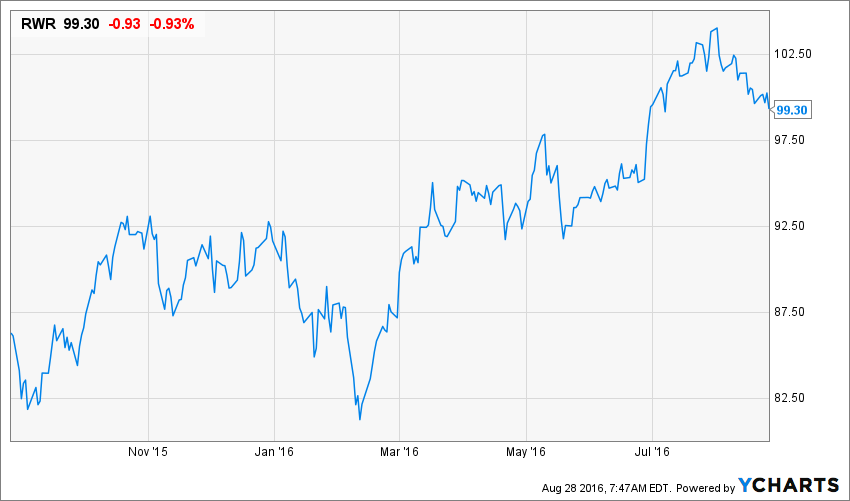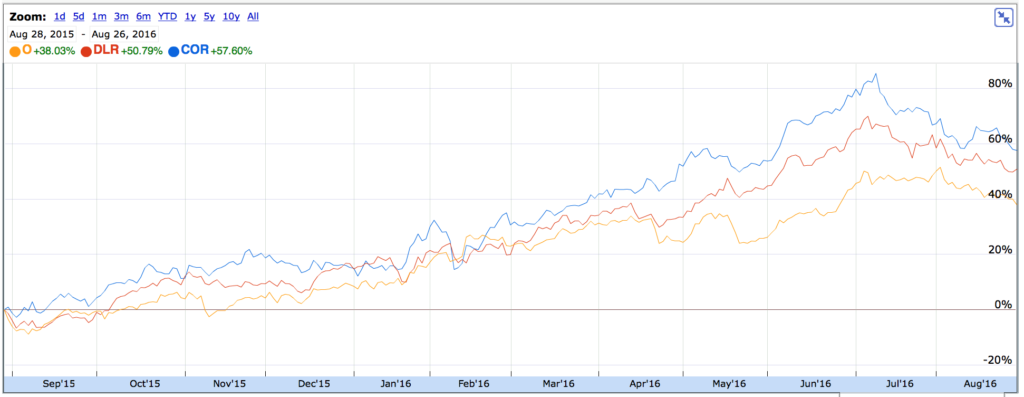Often an overlooked sector among institutional investors, and often adored by retail investors, these stocks tend to be extremely volatile and offer a poor risk-reward profile due to their structural opacity, high management costs, and macroeconomic exposure. These are often masked by high yields, hence the retail investor’s love affair with them.
Last year and the year before that were rough for REITs, but they’ve had a tremendous recovery lately:

Some REITs, like CorSite Realty (COR), Realty Income Corporation (O), and Digital Realty Trust (DLR) are up over 30%, even 50% in the last year.

A large cause of this trend: a correction. Steep sell-offs in previous years have caused ridiculously low valuations, causing investors to see and purchase undervalued stocks. Now the valuations are historically high in many cases, leaving this cause to buy to no longer apply.
This may be why many REITs are off their 52-week (and all-time) highs. O is down 5% in the last month, as is DLR; COR is down 8%. Many other REITs are down similarly, and the REIT ETF (RWR) is down 2%, despite having an incredibly conservative portfolio.
Analysts need to look at REITs differently. Partly, they are retail investor driven. Partly, they are sensitive to real estate cycles, demand within their specialty, and the solvency of their tenants. A major economic downturn can crush a triple net lease retail focused REIT like National Retail Properties (NNN), which fell 40% in 2008 as that crisis caused widespread panic. Yet NNN is one of the best quality retail REITs out there, and not only didn’t cut its dividend during the crash, but has increased it by about 25% since then.
Clearly, a different set of tools and strategies are necessary when looking at REITs. Analysts need to know those tools, and they need to think about these assets differently than normal common stocks. In fact, every asset class, every special investment vehicle, and every market has its own particularities. The best analysts know this fact, and approach each new asset class looking at what those particularities are.
